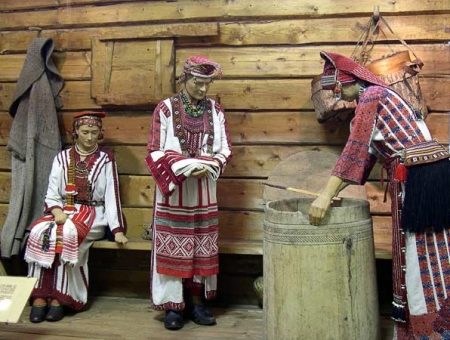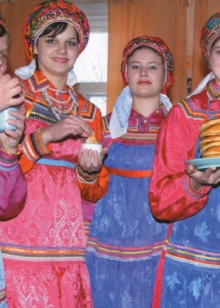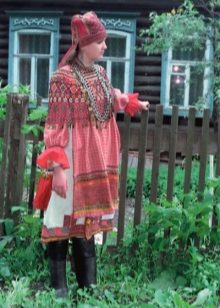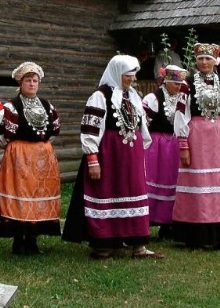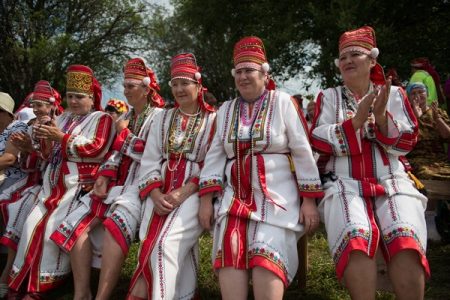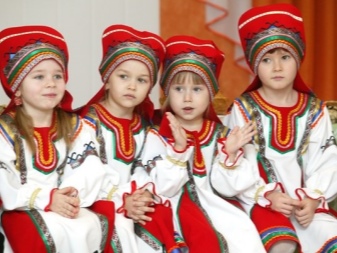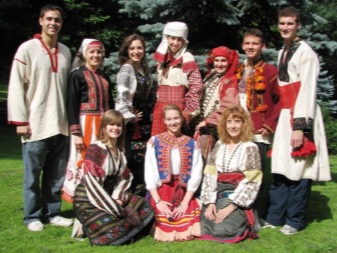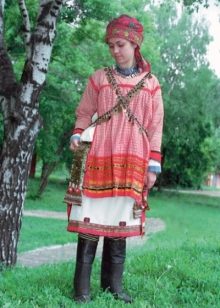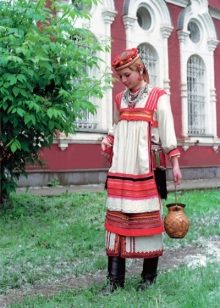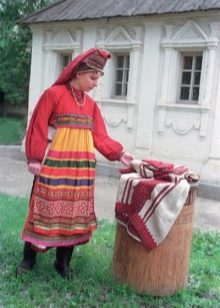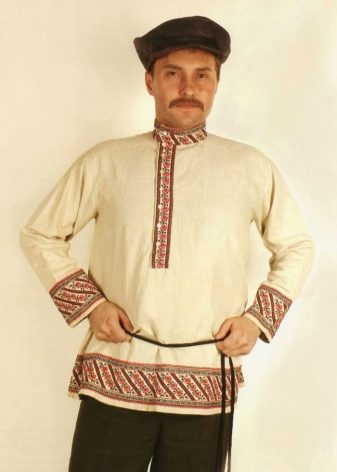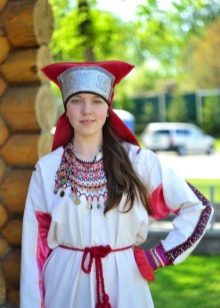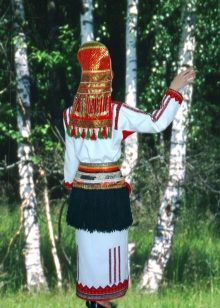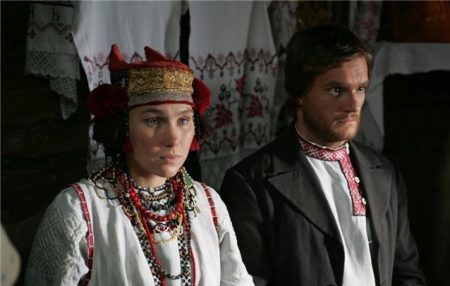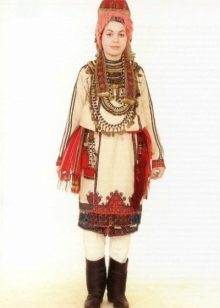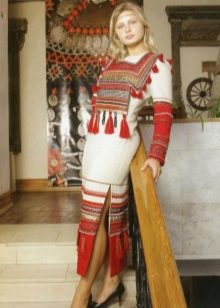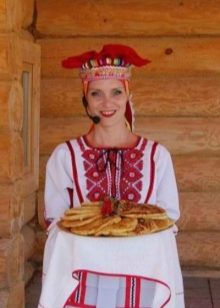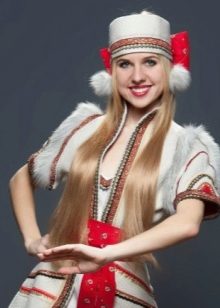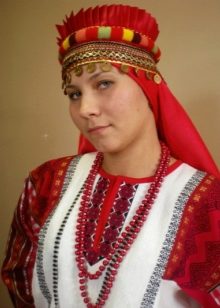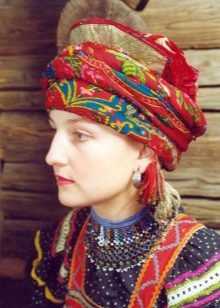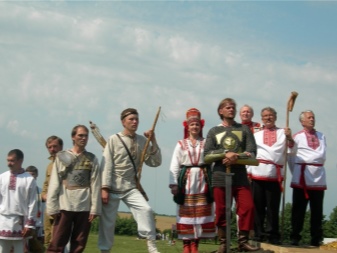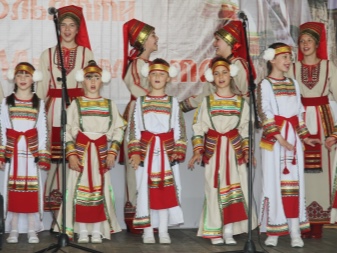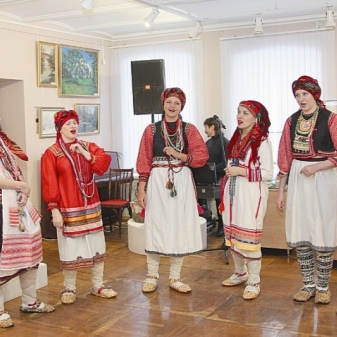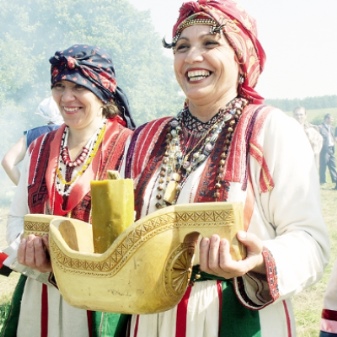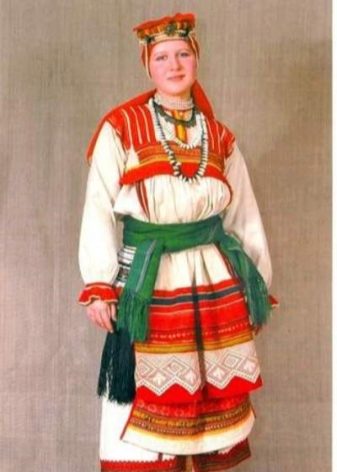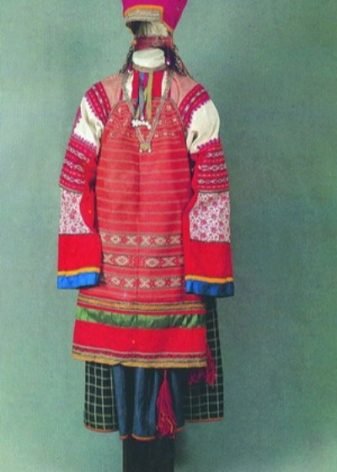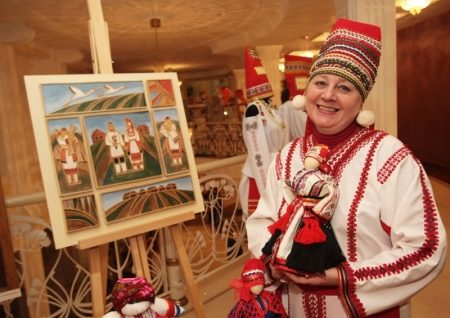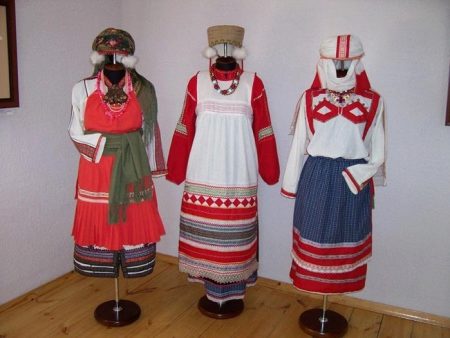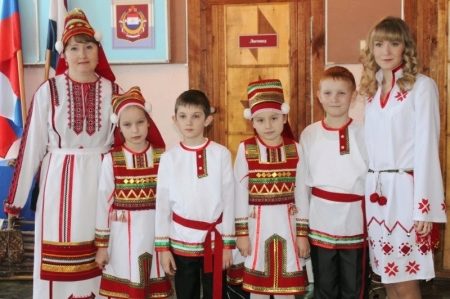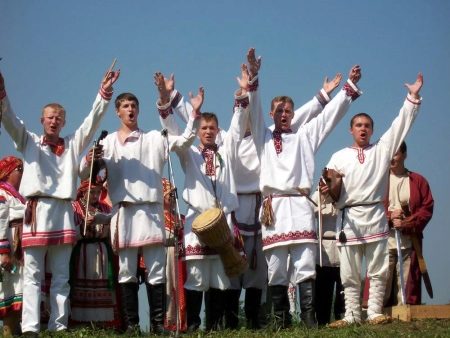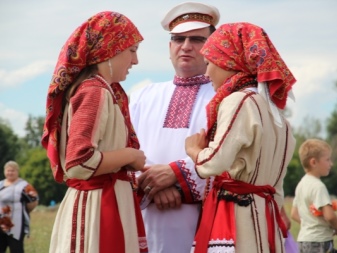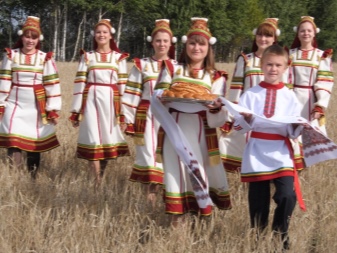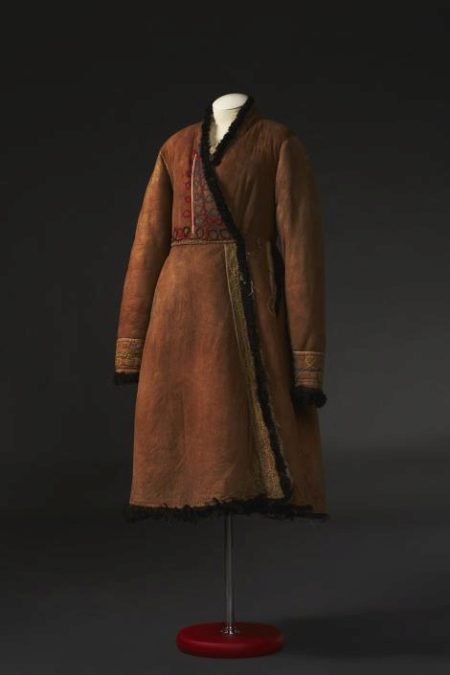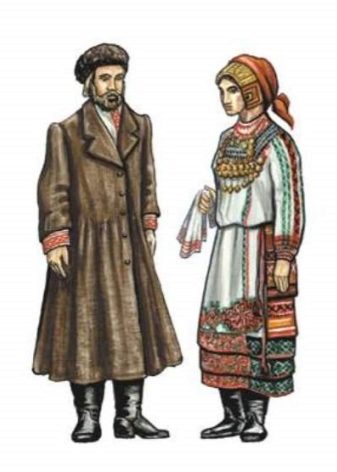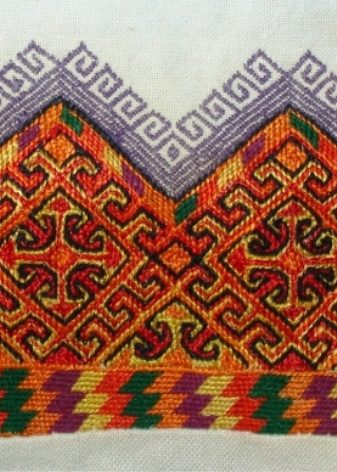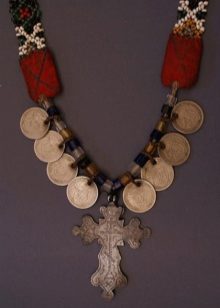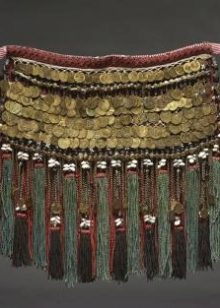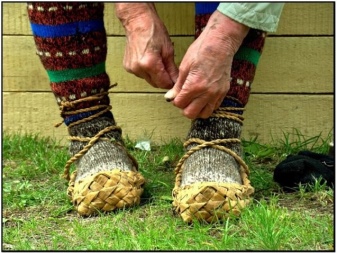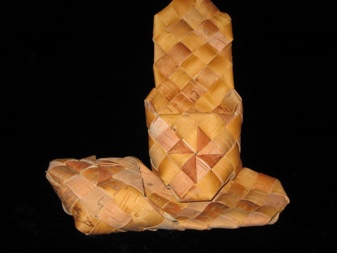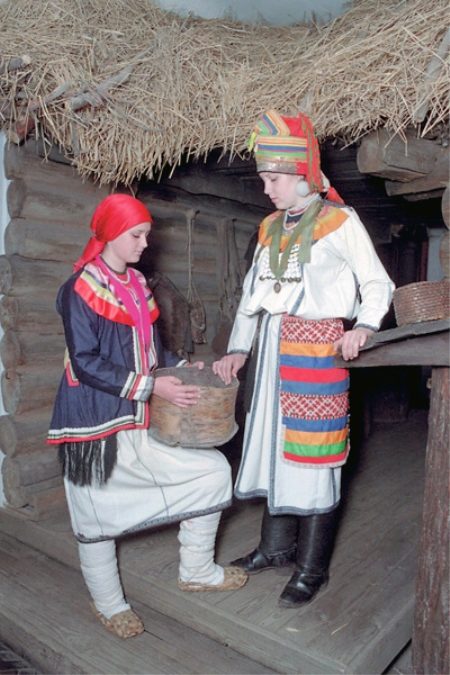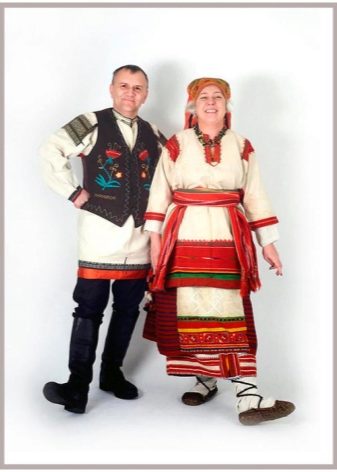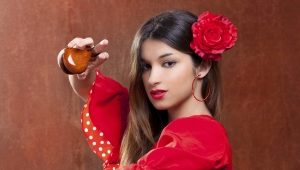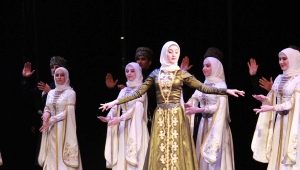Mordovian national costume

Mordovian national costume originates in ancient times. For many years the people invested in its creation a part of their culture and beingness. Laboriously created what was convenient and at the same time could emphasize the peculiarities of the culture of Mordovia.
Mordovian costume opens up a new view of beauty from the point of view of the Mordovian people. This Mordovian costume is a whole work of art, composed of various elements of clothing, uniquely decorated and decorated. And all this skillful ability to create unique things was carefully preserved over many hundreds of generations and passed from hand to hand.
A bit of history
Mordva is an ancient Finno-Ugric tribe. It began to form in the 7-6 centuries BC in the territory of the Saratov Volga region, on the right bank of the Volga and its tributaries, in the basin of the Don rivers. Gradually, the people of Mordovia became settled agricultural, fortresses and cities appeared. Mordovians at all times were highly scattered - fell under the yoke of the Mongol-Tatar yoke, under the rule of the Kazan Khanate ... All this affected the formation and transformation of the Mordovian national costume.
It can be said that the costume was formed by peasants, therefore it included only the details of clothing necessary for daily use. Of the main things can be noted underwear and outerwear. As well as kits that differed for the off season and winter. Individual parts were used for decoration and were removable.
Mordovian people are divided into two ethnic groups. These are Mordovians-Moksha and Mordovians-Erzi. National costumes of each group are different. From common features, the following elements of clothing can be noted:
- as the main fabric is used canvas;
- tunic-shaped shirts;
- embroidered clothing trim;
- Beads, coins, shells serve as ornaments.
Features
Mordovian costume is rich in its colors. Especially designed for women. He is rightly considered the crown of decorative and applied arts of Mordovian masters. Each ethnic group has at least a dozen different types of costumes.
Mordovian shirt is similar to the clothes of the Byzantine kings. And thanks to the rich embroidery of wool, it becomes heavy and majesty.
Finally, the Mordovian costume from both ethnic groups was formed in the middle of the 19th century. It is possible to note the simplicity of daily clothes and the complexity and multiplicity of solemn dresses, replete with ornaments and special drapery of the figure.
Colors and shades
The clothes of the people of Mordovia did not abound in different colors.
- Men's suits consisted mainly of dark cloth. Black and white colors were present in the shoes and hats.
- Women's clothing won due to multi-colored embroidery and jewelry.
Fabric and cut
- For everyday wear, the Mordovian people used coarse fabric, which was made from hemp. Clothing for special occasions was more sophisticated. She sewed from flax.
- For the manufacture of hats used cloth.
- The cut of the clothes was loose, straight or trapezoidal. Outerwear was with a smell.
Varieties
Female
Women's outfit was rich in various items of clothing, which is why Mordovian women sometimes had to spend several hours on their attire and resort to the help of several helpers.
A tunic shirt was common in both ethnic groups. But unlike male, female was richly decorated. And women were distributed belt, frames.Their distinctive feature was the tassels at the ends. Mokshan wore a shorter shirt, so pants came to her. In Erzya, instead it was decided to wear a loincloth - pulay. Poulay and his decoration could tell a lot about a woman, her origin and wealth.
Existed at Mordovians and dress. It was called kafton krd. Over the dress women wore swinging clothes with different names: rutsya, impanar, mushkaz, and overalls. Were distributed and sleeveless, knee-length. They were decorated with frills and had a fitted cut. In winter, women wore sheepskin coats, like men.
The age, the situation in the family and society could be judged by the women's headwear. They were intricately decorated. Erzyanki wore a high hat in the shape of a cylinder; in mokshanok, he looked like a trapezoid-shaped cap.
Child
One of the latest women in fashion came in the apron. It was worn not only on weekdays, but also on holidays.
Children's clothes repeated elements of male and female adult costumes. The boys also wore shirts and coats or sheepskin coats. The girls could boast of embroidered robes and dresses.
Male
Men of the people of Mordovia dressed almost as Russians. True, they had their own characteristics. The main elements of clothing were a shirt - panar, and pants called ponks.
The shirt was worn over the pants. For the convenience of her girdled. Belt played an important role. He bore the name of the sash or frame. From the materials for its manufacture used leather. A bronze, iron or silver plaque served as decoration. It could be a regular round shape or with a belt clip.
The plaque was covered with peculiar patterns, various images. In addition to his direct destination, the sash served to attach weapons and other items to him that had to be kept with him. Warrior's belt was their distinguishing mark. Those who deserved special awards in battles were attached to the belt by various sign buckles, plaques, tips.
In summer, the men's suit of the people of Mordovia underwent a change. Another white one was worn over the main shirt. Mokshi called her muskas, Erzi - rutsya. In the fall, the men took out another item of clothing - a coat or suman. It was fitted cut, black or brown. Frills served as a backseat.
Another type of clothing that was worn in demi-season is chapan, a product of direct cut with a large smell, wide collar and long sleeves. He was worn over his shirt and tied up with a belt.
In winter, Mordovian men wore sheepskin coats. The waist of these fur coats was detachable, with assemblies. Chapan, sheepskin sheepskin coats were road pavement.
As a headdress, the inhabitants of Mordovia made hats with small brim and caps. They were not particularly different in colors, they were either white or black. In the 19th century, the fashion for winter hats with earflaps and summer canvas caps appeared.
Accessories and decorations
The main decorations in the clothes for the Mordovians were original embroidery. The girls of each village even competed with each other in this art. Decorations were also common. Archaeologists find rings, bracelets, rings, earrings with pendants.
Footwear
Footwear was divided into casual and festive. In the summer and in the winter sandals were worn. In the manufacture of bast was used oblique weaving. They were performed with low sides, in front were trapezoid-shaped
For the warm period in the sandals used lining, for the cold - onuchi. On holidays, the Erzians put on their kamt, mokshan - kemot. The most elegant were boots, decorated with pleats on the legs and heels. Boots were with sharp noses. They were cow and calfskin.
Women's shoes are not much different from men's. The difference was only in the color of the footcloths. The rich residents of the Mordovian people wore boots on holidays.

